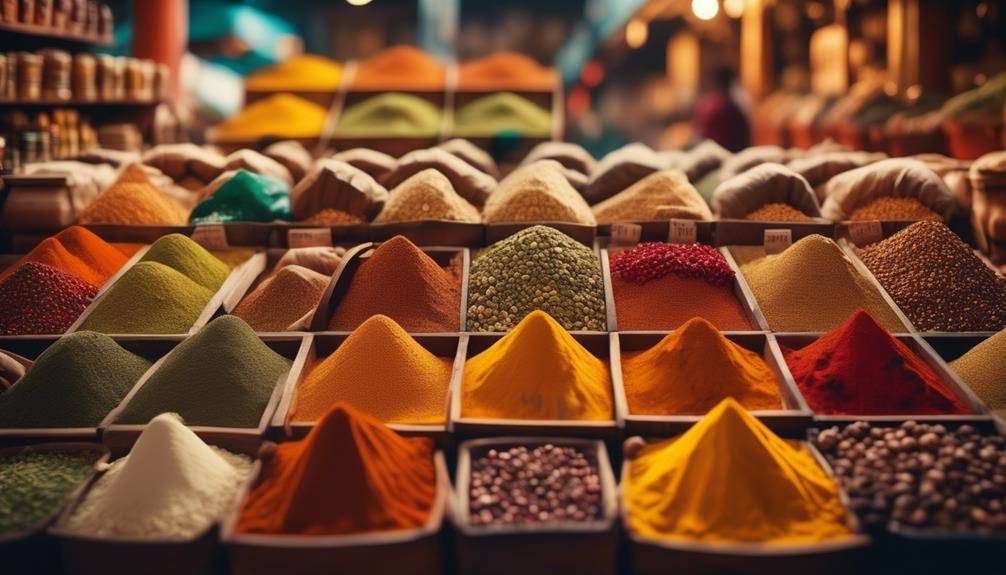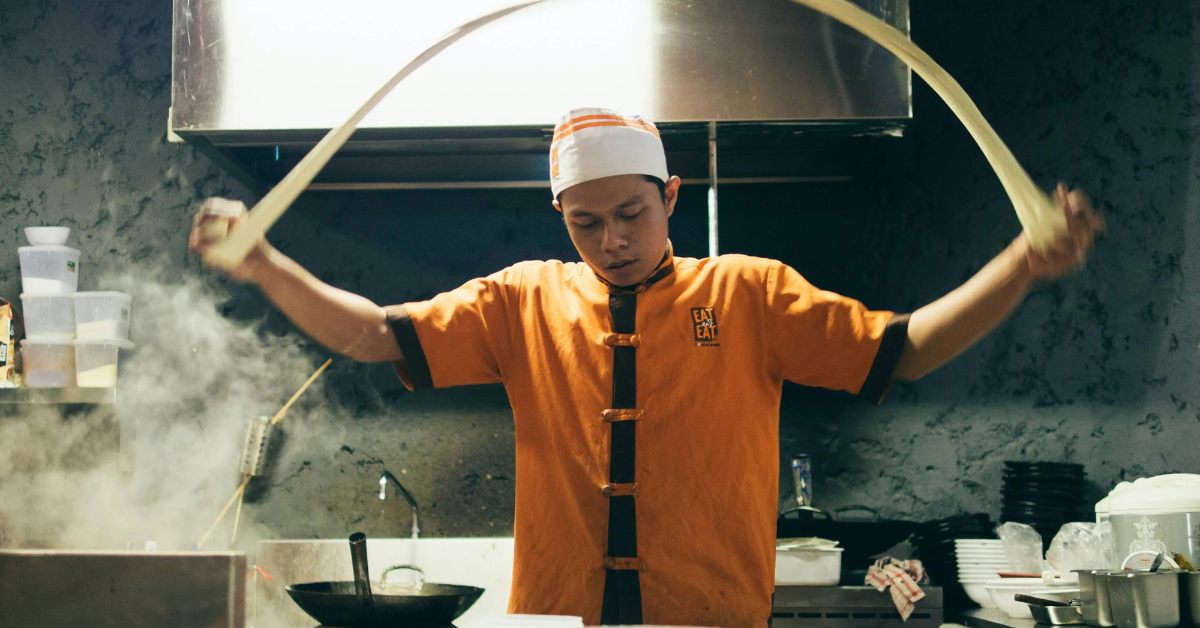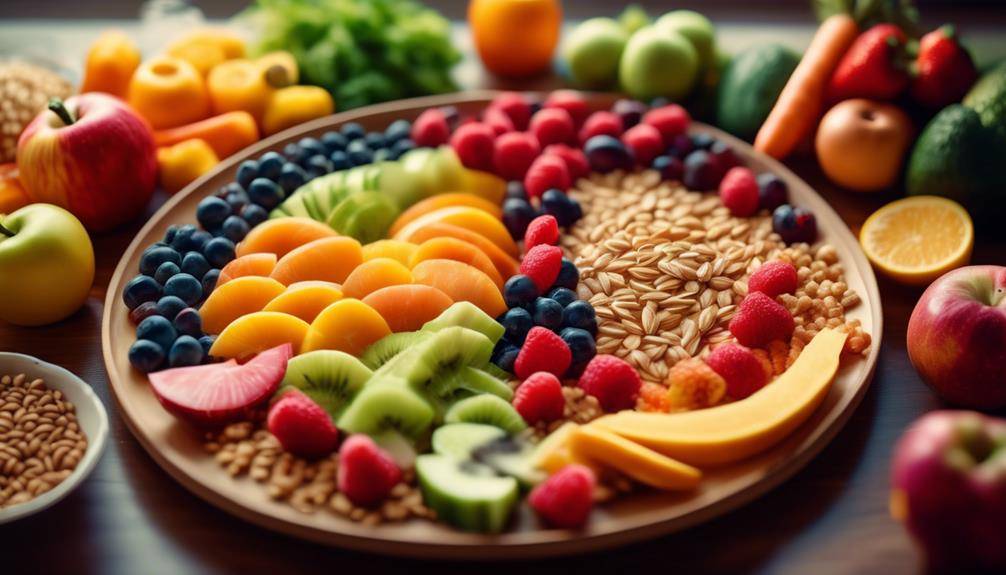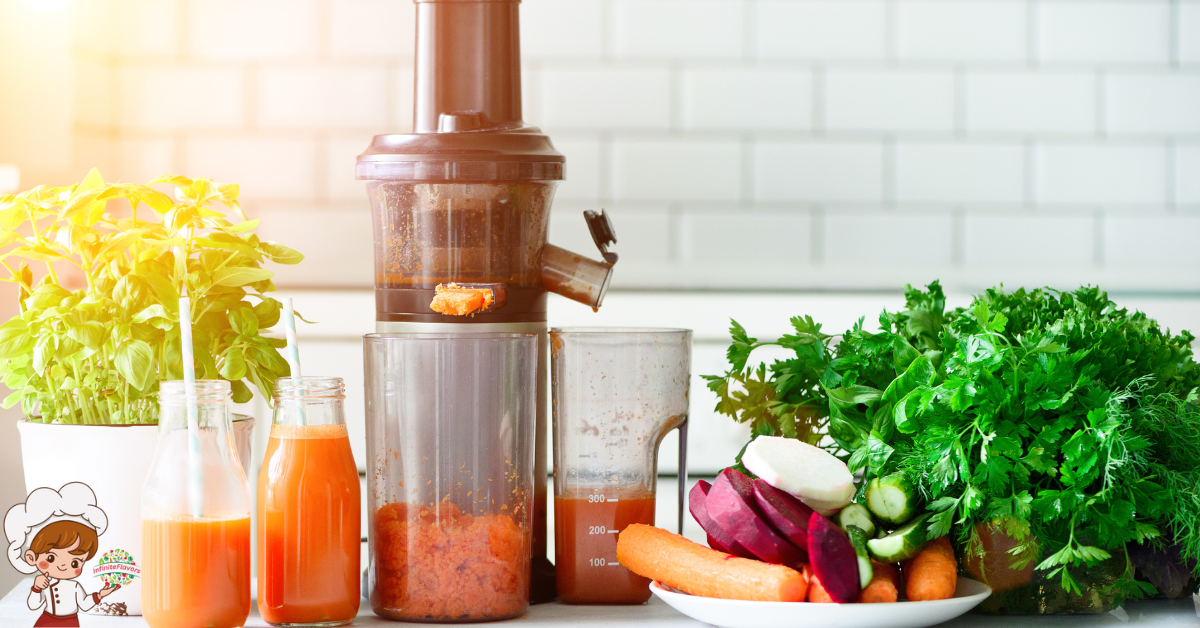Important Basic Techniques for First-Time Cooks

Basic Techniques for First-Time Cooks; Cooking is like a dance, and just like any dance, it requires learning a few basic steps before you can bust out those fancy moves. In the kitchen, these basic steps are known as techniques, and mastering them will make your culinary journey a whole lot smoother. So, dear first-time cook, get ready to put on your apron and learn the 8 best basic techniques that will turn you into a kitchen superstar. From perfecting your knife skills to mastering the art of sautéing, boiling, roasting, grilling, baking, stir-frying, and blanching, these techniques will give you the confidence to whip up delicious meals with ease. So let’s get cooking, shall we?
Knife Skills
When you are first starting out as a cook, it is essential to develop good knife skills by using proper technique and practicing regularly. Knife skills are the foundation of any chef’s repertoire, allowing you to prepare ingredients efficiently and with precision. However, before you start wielding a knife in the kitchen, it is crucial to prioritize knife safety.
To ensure your safety, always keep your knives sharp. Dull blades require more force, increasing the chances of slipping and cutting yourself. Regularly hone your knives using a sharpening steel or stone. Remember to hold the knife correctly, with your fingers curled under your hand and the blade resting against your knuckles. This grip provides stability and control while minimizing the risk of accidents.
Proper knife maintenance doesn’t end with sharpening and grip. It is also essential to store your knives correctly. Invest in a knife block or a magnetic strip to keep them safely organized and accessible. Never leave knives loose in a drawer, as they can easily harm you or dull their blades when they come into contact with other utensils.
In addition to knife safety, mastering knife skills requires practice. Start by mastering basic techniques like the chop, dice, and slice. Focus on maintaining a consistent size and shape for each cut. As you become more confident, experiment with more advanced techniques like julienne or chiffonade. Gradually, you’ll develop speed and precision, making your time in the kitchen more enjoyable and efficient.
Sautéing
To continue building your culinary skills, let’s dive into the art of sautéing, a technique that will elevate your cooking to new heights. Sautéing involves cooking food quickly in a small amount of oil or fat over high heat. This method not only imparts a delicious flavor to your ingredients, but it also helps to retain their natural texture and nutrients. To achieve sautéing success, two important factors to consider are proper heat control and choosing the right oil.
First and foremost, proper heat control is essential when sautéing. You want to heat your pan over medium-high heat until it’s hot, but not smoking. To check if your pan is ready, simply sprinkle a few drops of water onto the surface. If the water droplets sizzle and evaporate almost immediately, the pan is hot enough. If they linger or evaporate too quickly, adjust the heat accordingly. Maintaining the right temperature throughout the cooking process ensures that your ingredients cook evenly and develop a beautiful golden color.
Equally important is choosing the right oil for sautéing. It’s best to opt for oils with a high smoke point, such as vegetable oil, canola oil, or peanut oil. These oils can withstand high temperatures without burning or producing an unpleasant taste. Avoid using oils with low smoke points, like olive oil or butter, as they are more prone to burning and can impart a bitter flavor to your dish.
Boiling and Simmering
When it comes to boiling and simmering, there are a few key points to keep in mind. First, you need to understand the difference between a rapid simmer and a gentle simmer. A rapid simmer is when the liquid is bubbling vigorously, while a gentle simmer is when the bubbles are smaller and more delicate. Secondly, cooking time will vary depending on what you’re boiling. For example, pasta usually takes around 8-12 minutes, while vegetables may only need 5-7 minutes.
Rapid Vs Gentle Simmering
For a first-time cook, understanding the difference between rapid and gentle simmering is essential to mastering the art of boiling and simmering. Rapid boiling refers to when the liquid is heated to a point where it vigorously bubbles and produces large amounts of steam. This is ideal for cooking pasta or blanching vegetables quickly.
On the other hand, gentle simmering involves maintaining a low and steady heat, with small bubbles gently rising to the surface. This method is perfect for slow cooking, allowing flavors to develop over time without overcooking or breaking down the ingredients. Whether you’re making a delicate sauce or braising meat, knowing when to use rapid boiling or gentle simmering can greatly impact the outcome of your dish. So, pay attention to the heat and adjust accordingly for the best results.
Cooking Time for Boiling
To determine the appropriate cooking time for boiling and simmering, you’ll need to consider the type of ingredient you’re cooking and the desired level of doneness. Here are some guidelines to help you determine cooking times for common ingredients:
- Cooking Pasta: For perfectly al dente pasta, follow the instructions on the package and boil it for the recommended time. Remember to salt the water generously to enhance the flavor.
- Hard Boiled Eggs: Place the eggs in a saucepan and cover them with cold water. Bring the water to a boil, then reduce the heat to a gentle simmer. Cook the eggs for 9-12 minutes, depending on your desired level of doneness. Drain and immediately transfer the eggs to an ice bath to stop the cooking process.
Roasting
When it comes to roasting, there are three key points to keep in mind. First, consider whether you’re roasting meat or vegetables, as they require different techniques and cooking times. Second, pay attention to temperature and timing to ensure your food cooks evenly and is cooked to perfection. Lastly, don’t forget about seasoning and flavors, as they can elevate the taste of your roasted dishes. So, let’s explore these points further and become a pro at roasting!
Meat Vs Vegetables
Roasting offers a simple yet flavorful way to cook both meat and vegetables. Whether you’re preparing a juicy steak or a medley of colorful veggies, this cooking technique can elevate your dishes to new heights. Here are four key differences between meat preparation and vegetable cooking techniques when it comes to roasting:
- Texture: While meat becomes tender and juicy when roasted, vegetables develop a deliciously crisp exterior with a soft interior.
- Seasoning: Meat benefits from bold marinades and rubs to enhance its flavor, whereas vegetables shine with a simple seasoning of salt, pepper, and herbs.
- Cooking time: Meat typically requires longer roasting times to reach the desired level of doneness, while vegetables cook relatively quickly.
- Temperature: Meat is best roasted at higher temperatures to achieve a caramelized crust, while vegetables prefer lower temperatures to prevent them from burning.
Mastering the art of roasting both meat and vegetables will allow you to create mouthwatering dishes that satisfy every palate.
Temperature and Timing
Now let’s dive into the crucial aspects of temperature and timing when roasting, which will greatly impact the outcome of your dishes. Temperature control is key in roasting as it ensures that your food cooks evenly and to the desired level of doneness. Preheating your oven to the recommended temperature before placing your food inside is essential. Cooking times also play a vital role in achieving perfectly roasted dishes. It is important to follow recipes or guidelines to ensure that your food is cooked for the right amount of time.
Undercooking can result in raw or tough meat, while overcooking can make it dry and tasteless. So, pay attention to the recommended cooking times and use a timer to avoid any mishaps. Mastering temperature control and cooking times will help you achieve delicious and well-cooked roasts every time.
Seasoning and Flavors
To enhance the taste and aroma of your roasted dishes, it is important to carefully consider the seasoning and flavors you use. Here are some tips to help you make your roasted dishes truly delicious:
- Marinating techniques: Before roasting, consider marinating your meat or vegetables. This will infuse them with flavor and help to tenderize them. Try using a mixture of herbs, spices, oil, and acid, like lemon juice or vinegar, to create a flavorful marinade.
- Flavor pairing: When choosing seasonings and flavors, think about complementary and contrasting flavors. For example, if you’re roasting chicken, consider pairing it with herbs like thyme or rosemary, and adding some garlic for a savory kick. Or, if you’re roasting vegetables, try using a combination of sweet and savory flavors, like honey and balsamic vinegar.
- Experimentation: Don’t be afraid to get creative and try new flavor combinations. Roasting is a versatile cooking technique that allows you to experiment with different seasonings and spices. Don’t be afraid to step outside of your comfort zone and try something new.
- Taste as you go: Throughout the roasting process, be sure to taste your dish and adjust the seasonings as needed. This will ensure that your dish is perfectly seasoned and full of flavor.
Grilling
Once you have mastered the art of basic cooking techniques, it’s time to explore the world of grilling. Grilling is an exciting way to cook your favorite foods while enjoying the great outdoors. Whether you’re grilling juicy steaks, tender chicken, or flavorful vegetables, there are a few grilling techniques and safety precautions you should keep in mind.
First, let’s talk about grilling techniques. One important technique is preheating the grill. This ensures that the grill grates are hot enough to create those beautiful grill marks and seal in the juices. Another technique is oiling the grates to prevent sticking. Simply dip a folded paper towel in oil and use tongs to rub it on the grates before placing your food on the grill.
Now, let’s discuss some grilling safety precautions. Always make sure to grill in a well-ventilated area, away from any flammable objects. Keep a fire extinguisher nearby, just in case. When lighting the grill, use long-handled tools and avoid wearing loose clothing that could catch fire. And remember, never leave the grill unattended while it’s lit.
Grilling can be a fun and delicious way to cook, but it’s important to follow these grilling techniques and safety precautions to ensure a successful and safe grilling experience. So fire up the grill, gather your friends and family, and enjoy the mouthwatering flavors that grilling has to offer. Happy grilling!
Baking
Discover the art of baking, a fundamental skill for first-time cooks, that allows you to create a wide variety of delicious sweet and savory treats. Baking is not only a science but also an art form that requires precision and creativity. Whether you are making pastries or bread, there are a few essential techniques and tools that will help you become a confident baker.
- Pastry Techniques:
- Start with cold ingredients: When making pastry dough, it’s important to use cold butter or shortening. This helps create flaky layers in your crust.
- Don’t overmix: When combining the dry and wet ingredients, mix just until they come together. Overmixing can result in a tough and dense pastry.
- Chill the dough: After making the dough, let it rest in the refrigerator for at least 30 minutes. This allows the gluten to relax and makes the dough easier to work with.
- Bread Baking Essentials:
- Use high-quality flour: The type of flour you use can greatly affect the texture and flavor of your bread. Opt for bread flour, which has a higher protein content and produces a chewier loaf.
- Knead the dough: To develop gluten and create a light and airy bread, knead the dough vigorously for about 10 minutes.
- Proof the dough: After shaping your loaf, let it rise in a warm, draft-free place until it has doubled in size. This can take anywhere from 1 to 2 hours, depending on the recipe.
- Bake with steam: To achieve a crispy crust, place a pan of hot water in the oven while your bread bakes. The steam helps create a beautiful golden-brown crust.
Stir-frying
If you want to quickly cook up a tasty and healthy meal, stir-frying is the technique for you. Stir-frying is a cooking method that involves quickly frying small, bite-sized pieces of food in a hot pan or wok with a small amount of oil. This high-heat cooking technique allows for quick cooking while still retaining the natural flavors and textures of the ingredients.
To master stir-frying, there are a few key techniques to keep in mind. First, make sure to cut your ingredients into uniform, bite-sized pieces. This ensures that everything cooks at the same rate and maintains its texture. Second, preheat your pan or wok before adding the oil. A hot pan will prevent the ingredients from sticking and help them cook quickly and evenly. Third, stir-fry in batches if necessary. Overcrowding the pan can cause the ingredients to steam rather than fry, resulting in a soggy stir-fry.
Now, let’s talk about stir fry recipes and variations. The beauty of stir-frying is that it’s incredibly versatile and adaptable to different ingredients and flavors. You can stir-fry a variety of proteins, such as chicken, beef, shrimp, or tofu, along with an array of vegetables like bell peppers, broccoli, and carrots. Add some garlic, ginger, and soy sauce for a classic Asian-inspired stir-fry, or experiment with different sauces and seasonings to create your own unique flavor combinations.
Some popular stir-fry recipes include beef and broccoli, shrimp with mixed vegetables, and chicken stir-fry with cashews. Don’t be afraid to get creative and customize your stir-fry to your own taste preferences. With a little practice and experimentation, you’ll soon become a stir-frying pro, whipping up delicious and healthy meals in no time.
Blanching and Shocking
To blanch and shock is an essential technique for first-time cooks, as it allows you to quickly cook vegetables while preserving their vibrant color and crisp texture. Here are four simple steps to master blanching and shocking:
- Boil a pot of water: Fill a large pot with water and bring it to a rolling boil. Add a generous amount of salt to season the water. This step helps to enhance the flavor of the vegetables during blanching.
- Prepare an ice bath: While the water is boiling, prepare a large bowl filled with ice and cold water. This will be used to shock the vegetables after blanching. The ice bath stops the cooking process and helps to maintain the vegetables’ bright color.
- Blanch the vegetables: Carefully drop the vegetables into the boiling water and cook them for a short period, usually 1-2 minutes. The exact cooking time depends on the type and size of the vegetables. Blanching helps to soften the vegetables slightly and bring out their natural flavors.
- Shock the vegetables: Using a slotted spoon or tongs, quickly transfer the blanched vegetables into the ice bath. Allow them to sit in the ice bath for a few minutes until they are completely cooled. This shocking method halts the cooking process and locks in the vibrant color and crispness of the vegetables.
Blanching and shocking are versatile techniques that can be used for a variety of vegetables, such as broccoli, asparagus, and green beans. By mastering these techniques, you can elevate your cooking skills and create visually appealing and delicious dishes. So go ahead, give blanching and shocking a try and watch your vegetables shine!
Frequently Asked Questions: Basic Techniques for First-Time Cooks
Can I Use Any Type of Knife for Basic Knife Skills, or Is There a Specific Type of Knife I Should Use?
You can use any type of knife for basic knife skills, but it’s important to choose one that is sharp. A sharp knife will make your tasks easier and safer, giving you more control and precision in the kitchen.
How Do I Know When It’s Time to Flip the Food While Sautéing?
When sautéing, flip the food when it’s golden brown on one side. For seasoning, add it before or after flipping, depending on the recipe. To prevent sticking, use a nonstick pan, heat it properly, and use enough oil or butter.
What Is the Difference Between Boiling and Simmering, and When Should I Use Each Technique?
Boiling and simmering are different techniques used in cooking. Boiling is when a liquid reaches its highest temperature and bubbles rapidly, while simmering is a gentler simmer. For cooking pasta, boiling is better. To achieve the perfect simmering temperature, keep the heat low and the liquid barely bubbling.
Do I Need to Preheat the Oven Before Roasting, and if So, What Temperature Should I Set It To?
Yes, you should preheat the oven before roasting. Set it to the temperature specified in your recipe. However, for broiling, you typically don’t need to preheat the oven.
Can I Use a Regular Grill for Grilling or Do I Need a Specific Type of Grill?
You can definitely use a regular grill for grilling, but there are some tips to keep in mind. Make sure to clean the grill grates, preheat it properly, and control the heat levels for the best results.
Conclusion
In conclusion, mastering these basic cooking techniques will give first-time cooks the confidence to explore and experiment in the kitchen. From perfecting knife skills to mastering different cooking methods like sautéing, boiling, and roasting, each technique adds a new dimension to your culinary skills. So, grab your apron, gather your ingredients, and get ready to embark on a delicious cooking journey filled with flavors, aromas, and the joy of creating homemade meals. Happy cooking!








